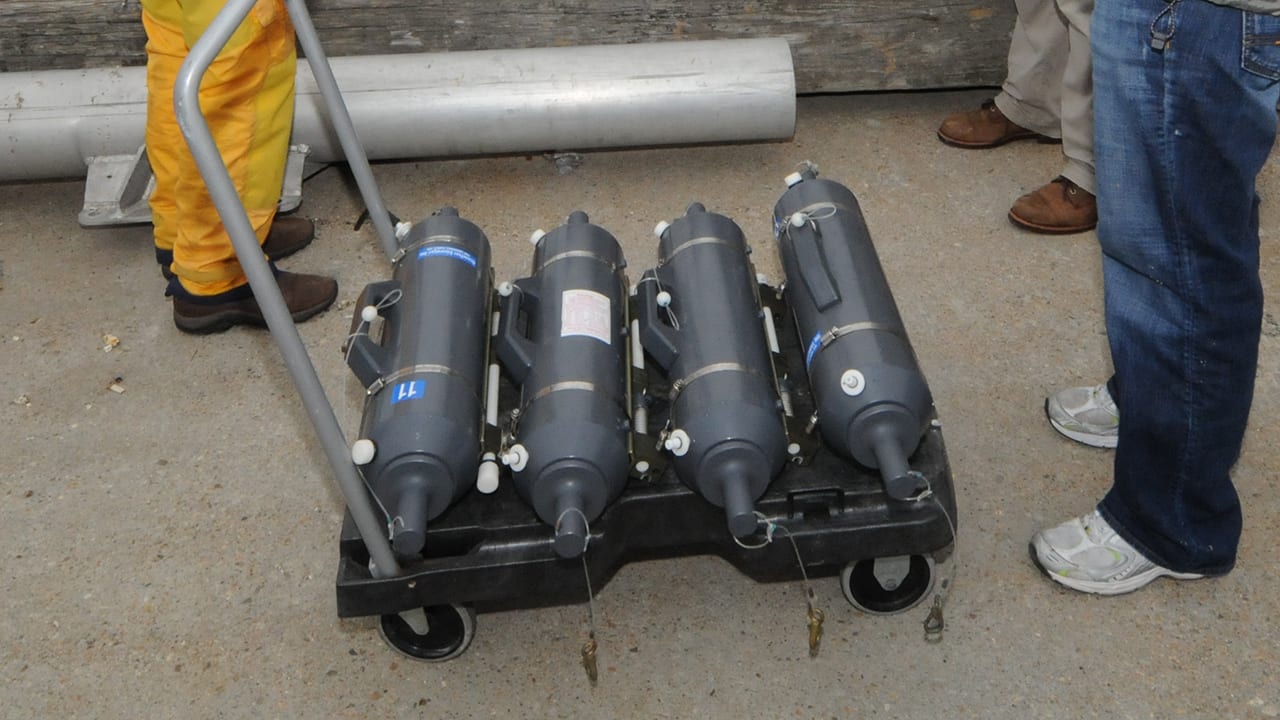Nets and Water Bottles
Water sampling devices range from a bucket dropped over the side of a ship to large water bottles sent thousands of meters toward the seafloor on a wire. Probably the most commonly used water sampler is known as a rosette, or a collection of water bottles.
Collecting nets come in a wide array of sizes. The smaller ones, perhaps a meter long, may be towed briefly in near-surface waters. The largest, towed for many hours, have great metal frames carrying as many as 20 nets, with multiple opening and closing devices and an environmental sensing array that sends information back to the ship's laboratory. Aboard ship, biologists may signal the nets to open in sequence as they observe temperature, depth, salinity, and other physical, chemical, and biological characteristics of interest in the water column.
When biological samples come aboard the ship, some may be examined immediately under microscopes in the ship's lab. Animals may be dissected or analyzed for clues to their food sources or exposure to pollutants. Other samples may be preserved for further work in shore-based laboratories.

